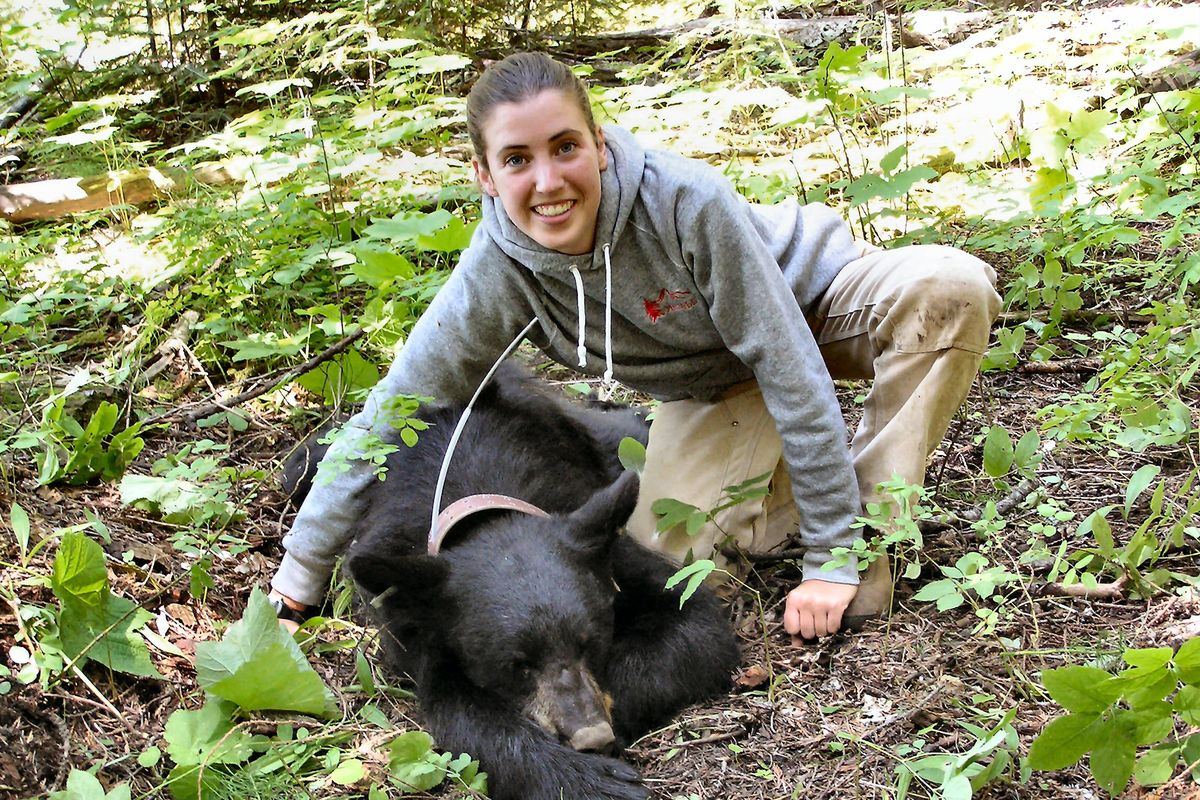Bears amble far, wide when year’s berry bad
Researcher figured good huckleberry crop draws most black bears, but finds hunger can top that

Bear populations rise and fall on huckleberry crops. So the data from a survey north of Bonners Ferry initially stumped Barb Moore.
During 2004 – the second year in a row of record-low huckleberry production – three times as many black bears wandered through a research site as passed through in the previous year.
At first, the high number of bears seemed counterintuitive. But detailed genetic analysis of hair samples from the site turned up a reasonable explanation. Many of the bears were transients, “all moving through the area, searching for food,” said Moore, a wildlife biologist for the Idaho Department of Fish and Game.
Moore’s study sheds light on the tough life of the Inland Northwest’s black bears. They have a carnivore’s appetite but subsist mostly on berries by late summer, a critical time for packing on pounds before hibernation. When berry crops crash, bears can travel hundreds of miles in search of food.
“The Northwest isn’t great bear habitat,” said Moore, who used her research in her thesis for her recent master’s degree in wildlife biology from the University of Montana.
In the spring, the Idaho Panhandle’s black bears eat fawns and elk calves, plus the tender shoots of new spring grasses. Grubs and carrion are also part of their diet. But as the season progresses and other foods disappear, berries become the main calorie source.
“It’s kind of unusual when you’re a large carnivore, but your diet is primarily plant material,” said Mike Mitchell, Moore’s adviser at Montana. “Bears tend to kind of live on the edge.”
Average bear weights reflect the limited food supply. In the Northwest, male black bears average 175 to 200 pounds. In the East, where acorns help fatten up black bears for the winter, males can weigh 600 to 800 pounds.
With fewer high-calorie food sources, bear populations grow slowly in the Inland Northwest. That alerted Moore that something unusual was going on at the research site north of Bonners Ferry.
The bear counts, which took place from 2003 to 2006, were a joint project of the U.S. Forest Service and Idaho Department of Fish and Game. The agencies put up barbed wire, which the bears crawled through to investigate piles of wood saturated with liquefied fish and cow’s blood. (The reek is “like nothing you’ve ever smelled before,” Moore said, “but surprisingly, you get used to it.”)
Hair samples collected from the barbed wire were sent to a Missoula laboratory, which used genetic analysis to identify individual bears.
In 2003, 53 bears visited the wood piles, which were spread over a 155-square-mile area. In 2004, 156 bears visited the sites. The numbers tapered off during the remaining two years of the study.
Additional genetic testing of the 2004 hair samples helped identify which subpopulations individual bears belonged to. With that information, Moore said, it became clear that the high bear counts were caused by migration, not local population growth.
“Barb’s work is helping us refine techniques for monitoring black bear populations,” said Jim Hayden, Idaho Fish and Game’s regional wildlife manager.
Bears are secretive by nature, which makes tracking populations difficult, he said. While the barbed wire “hair snares” offer promise for counting bears, Moore’s research also points out how the data can be skewed in poor berry years, Hayden said.
Poor berry years are usually well documented at wildlife agencies, Moore said. That’s when the nuisance calls pour in.
“You hear from everyone in the public,” she said, “because the bears are in their apple trees, or in their garbage.”